Rough hydrangea: characteristics, varieties and cultivation
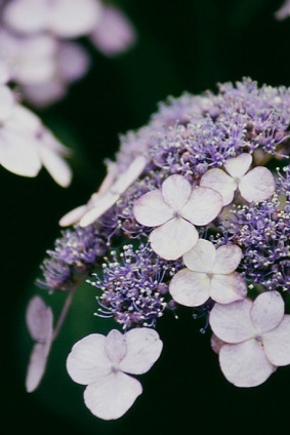
Such a beautiful flowering shrub as hydrangea has gained great popularity among gardeners. It is unpretentious in care, withstands sub-zero temperatures, and also blooms for several months in a row. One of the species is rough hydrangea. The characteristics and rules of agricultural technology are in the article.
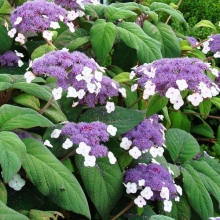

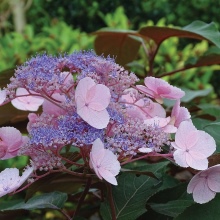
Description
The hydrangea family is native to Japan, but in the 19th century, the culture became popular in European countries. The first results of selection did not differ in good survival rate in the open field and frost resistance, the flower was considered exclusively indoor. After a while, breeders managed to breed several varieties of hydrangea with their own characteristic features.
So, one of the popular types of culture is rough hydrangea... It is a tall bush (can reach 3 meters) with thick branches on which decorative leaves are located (dimensions 35x25 cm). Young foliage resembles dark green velvet. However, at the end of summer, it turns brownish orange.

The inflorescences ripen quite large. Most of them are painted in snow-white color. But there are lilac specimens with a lilac shade, differing in their small size... The flowers are located in the middle. They, in turn, are surrounded by large white buds.
The flowering period lasts from August to September, which is a great advantage of hydrangea over other garden crops.
Rough (or rough) hydrangea has high winter hardiness. This feature allows gardeners to grow the plant in almost any climatic conditions.
The only thing that is important to know is that with the arrival of winter, the shrubs need to provide good protection from wind and cold.
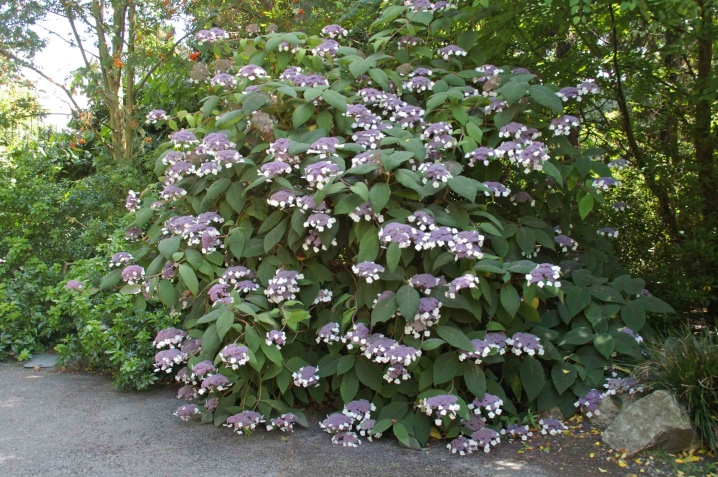
Varieties
Interestingly, this species has several varieties - consider the most popular ones.
- "Sargent". This variety of garden flower is especially fond of Russian gardeners. Outwardly and to the touch, the foliage resembles velvet. In an open bud, the petals are located separately from each other. However, all the beauty lies in the combination of several shades of flowers - rich purple is replaced by pale pink, then turns into pale blue. Sometimes you can see small white spots. The bush grows quite large - up to 4 meters. The first flowering occurs at the end of August and lasts until the first snow.
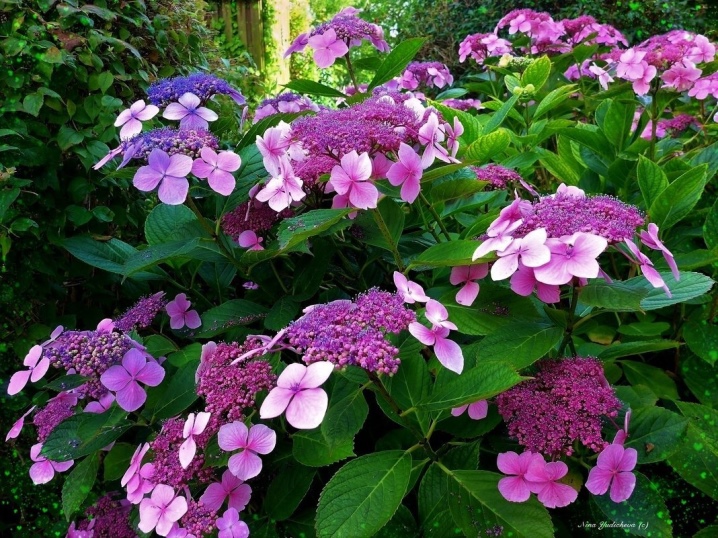
- Hot chocolate. This variety was obtained relatively recently. It is distinguished by large sterile flowers, colored purple in the center, and pale pink at the edges. The buds are large - about 30 cm in diameter. In addition, the foliage of the Hot Chocolate is felt and rough. During the season it changes its color - from silver to olive. The bark and branches also lend themselves to changes - in winter they are set brown-red, reminiscent of chocolate. The same goes for foliage. The shrub begins to bloom in July, up to frost.
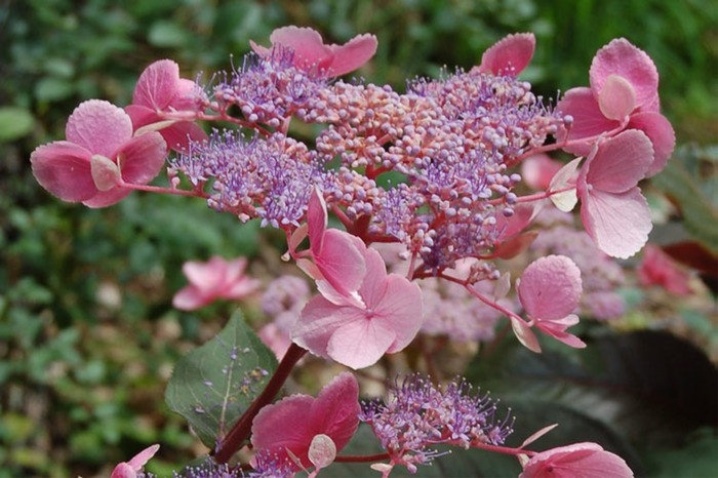
Landing
A suitable place for growing rough hydrangea is light, protected from drafts. It is not recommended to plant a young plant in direct sunlight, such an impact will negatively affect the development of hydrangea.
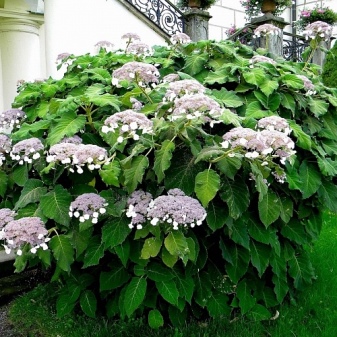

As for the soil, it is preferable to choose nutritious, neutral, maybe slightly acidified.
Before planting in a permanent place, it is necessary to prepare seedlings. It is better to buy it in specialized flower shops or from trusted gardeners.It is recommended to choose a plant that is 2-3 years old.
You can plan a planting in the spring, immediately after the snow melts, or in the fall, preferably in September.


So, the landing technology involves the preparation of the pit. The depth is about 50-60 cm. A drainage layer of broken brick or crushed stone must be laid on the bottom. Fertile soil with humus and peat is poured from above. And also mineral fertilizers are added to this mixture.
An interval of 2 meters should be observed between the bushes. The seedling is placed in a pit. When the tree is in the hole, gently straighten the roots. At the end, sprinkle with earth so that the root collar looks out. The last step is to water each bush abundantly with about two buckets of water.
Advice from gardeners: if planting is carried out on a dry day, the seedlings should be well sprayed with water.
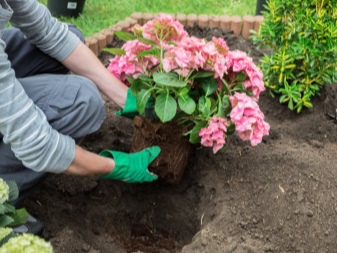
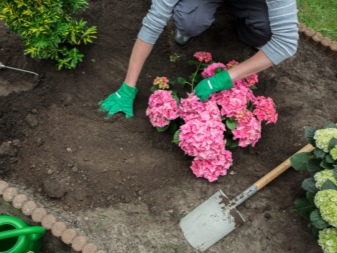
Care
Rough hydrangea is a moisture-loving plant. The process of development of root and deciduous systems directly depends on this indicator. In addition, the lack of water negatively affects the flowering of the shrub. Therefore, the main care for hydrangea involves regular watering - at least 3 times a week. Each bush requires 4 buckets of water.
On cloudy days, irrigation will suffice. Experienced gardeners use a mulch layer of peat to retain moisture in the soil.
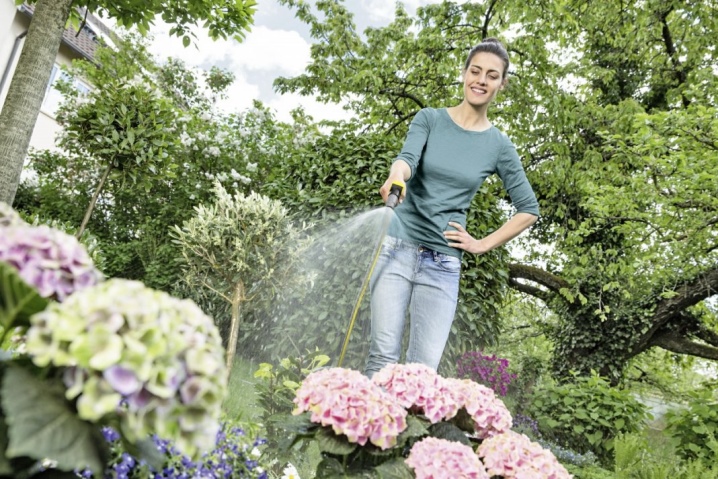
Do not forget about loosening the near-trunk circles - quite twice a season.
In the first two years after planting, the hydrangea does not need feeding - the initial supply of nutrients in the soil has not yet been used up. And here A 2-year-old plant can be started with mineral fertilizers... So, during the formation of buds, superphosphate, mullein, potassium sulfate (ratio with water 1: 10) are ideal. To increase the strength of the branches, monthly irrigation of the bush with a solution of potassium permanganate (2 mg per 10 liters of liquid) will help.
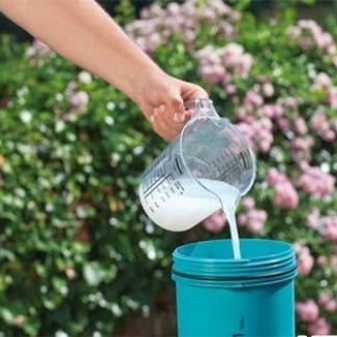
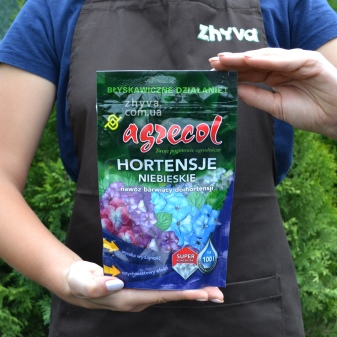
From the third year, rough hydrangea should be cut off. Usually this event falls on March-April. First of all, diseased, weak, damaged branches and shoots are removed. Next, last year's processes are cut off, leaving young buds.

Despite its resistance to cold weather, hydrangea needs shelter for the winter. For this, a layer of dry leaves, sawdust, felt, which is laid around the trunk, is suitable.
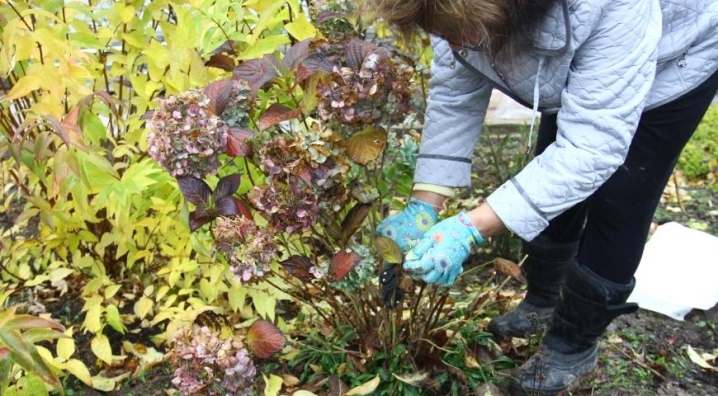
Reproduction
Garden culture reproduces in three ways.
- Seeds. The containers are filled with moist soil, where the seeds are sown. Next, cover the seedlings with a glass plate or film. As it dries, the soil is moistened. After about 3 weeks sprouts sprout, and after a couple of years the seedlings are ready for planting in a permanent place.
- Cuttings. Processes with kidneys are cut off, placed in a glass of water. Then they are divided into parts, which are soaked in the Kornevin solution. Cuttings planted in the ground take root after 30 days. Young seedlings are planted as usual.
- By dividing the bush. First, the tree is dug up. The roots are cleaned of the earth, washed under the tap. The hydrangea divided into fragments is treated with "Kornevin". I plant each part of the bush in the holes.

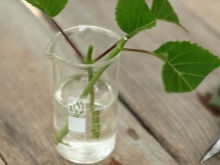
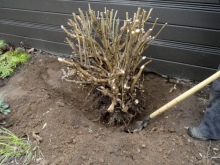
Diseases and pests
Rough hydrangea is quite resistant to various diseases. Despite good immunity, the plant is still exposed to infection or attack by pests.
- Chlorosis. The disease is given by yellowed leaves, the veins of which become darker. The reason is an increased alkaline environment. A solution of ferrous sulfate (45 g per bucket of water), which must be sprayed on the affected tree, will help to fight the disease.
- Powdery mildew. In this case, the leaves are covered with spots. Over time, it begins to darken. Treatment should be started as soon as the first symptoms are noticed. Gardeners recommend using Fundazol.
- Spider mites, weevils, bugs, aphids. The increased activity of pests is noted in cloudy, cold weather. The most effective remedies are insecticides.
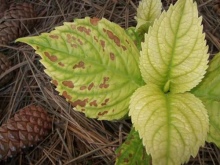
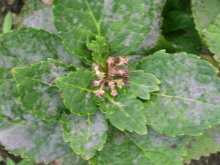

More often I plant rough hydrangea along streets, parks, squares. She received the greatest popularity among the owners of spacious garden, summer cottages.
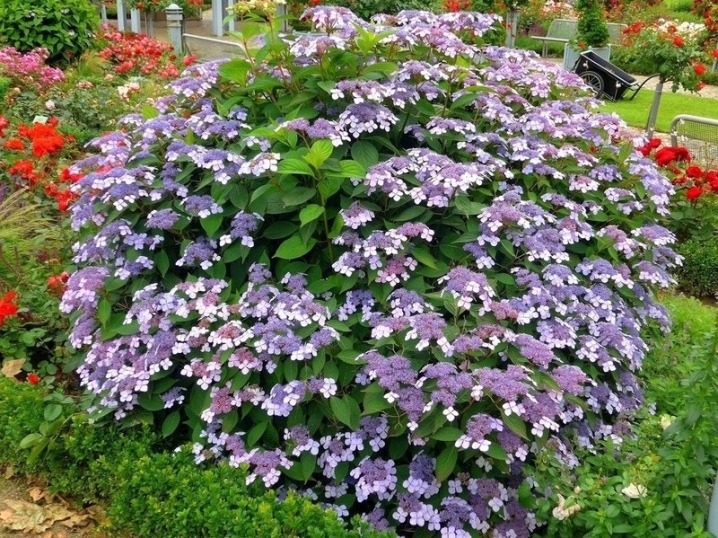
In landscape design, culture is used in combination with conifers, as well as small bushes. With proper care, the snow-white and pink buds will adorn your garden for months.
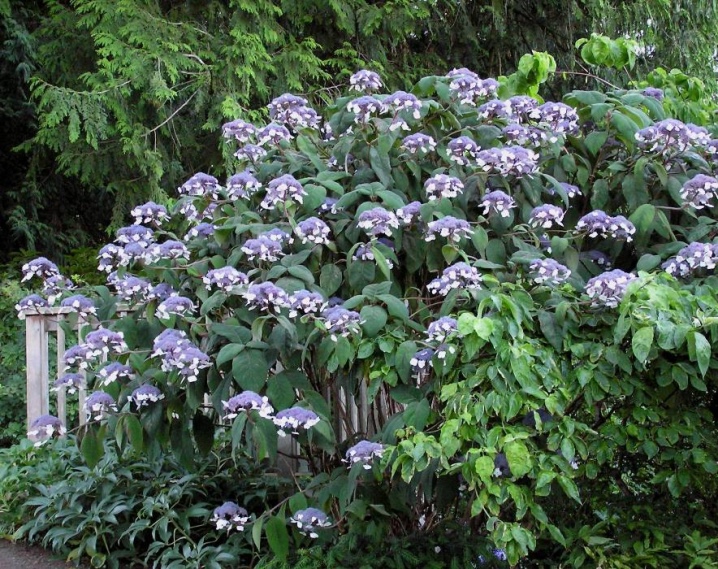
For an overview of rough hydrangea, see the video.



































































The comment was sent successfully.